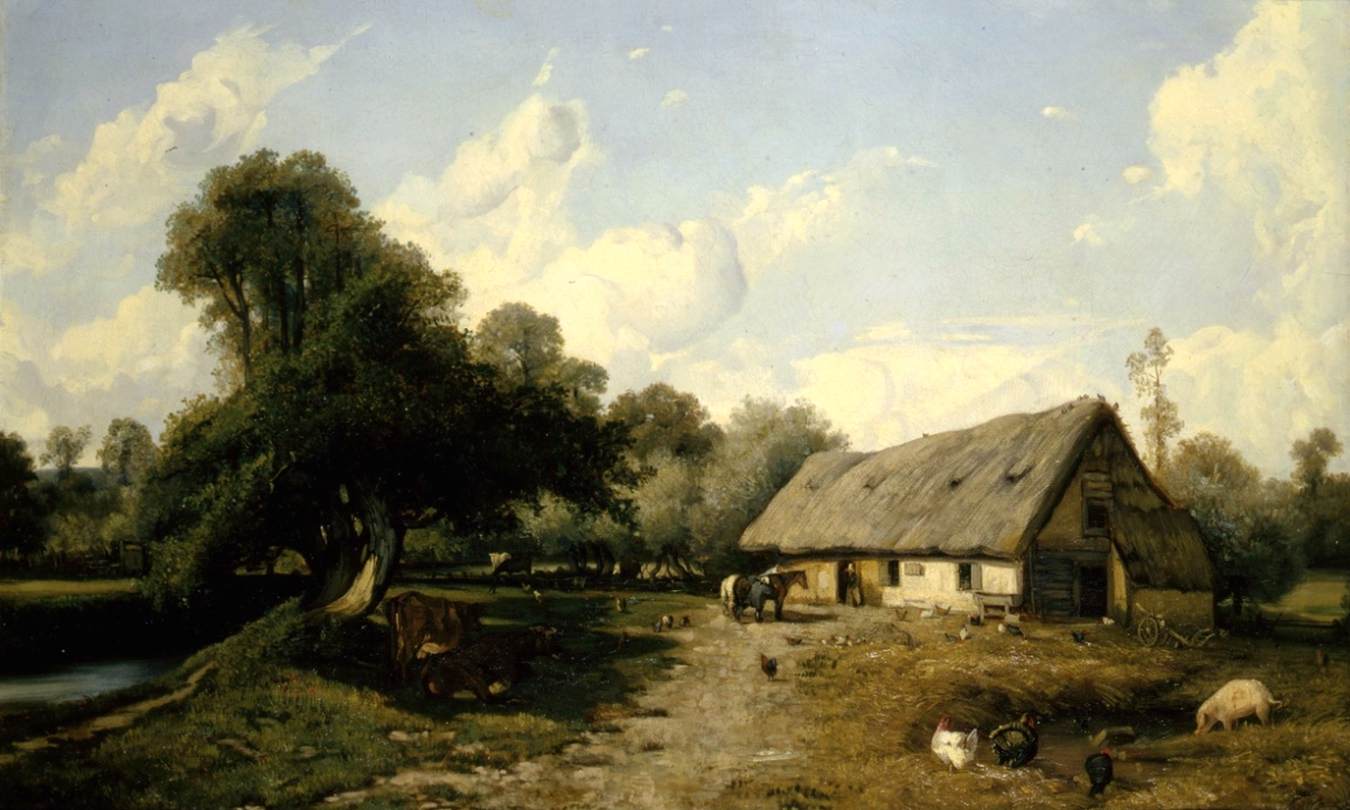Description
Jules Dupré's painting The Barnyard is a masterpiece of 19th-century French realism. This work presents an artistic style very characteristic of its time, with a loose brushwork technique and a palette of earthy and natural colors that evoke rural life.
The composition of the painting is very interesting, as Dupré manages to create a sense of depth and perspective through the arrangement of the elements in the painting. The central figure of the work is an old barn, which stands out for its size and its position in the center of the painting. Around it, you can see various animals such as cows, sheep and chickens, as well as a group of people working in the fields.
Color is another prominent aspect of the painting. Dupré uses a palette of earthy and natural tones, with a predominance of greens, browns and yellows. These colors evoke rural life and country atmosphere, and create a sense of calm and tranquility in the viewer.
The history of the painting is also very interesting. It was created in 1873, during a period of great social and political upheaval in France. At the time, many artists were interested in portraying rural life and nature as a way to escape urban turmoil and find peace and harmony in the natural world.
As for little-known aspects, it can be noted that the painting was exhibited at the Paris Salon in 1873, where it received very positive reviews. In addition, it is known that Dupré was inspired by the rural life of his childhood to create this work, and that he spent a lot of time in the countryside observing the lives of animals and people to capture the essence of rural life in his painting.
In short, Jules Dupré's The Barnyard is a masterpiece of 19th-century French realism, noted for its artistic style, composition, color, and the story behind its creation. It is a painting that evokes rural life and nature, and that remains relevant and moving today.

